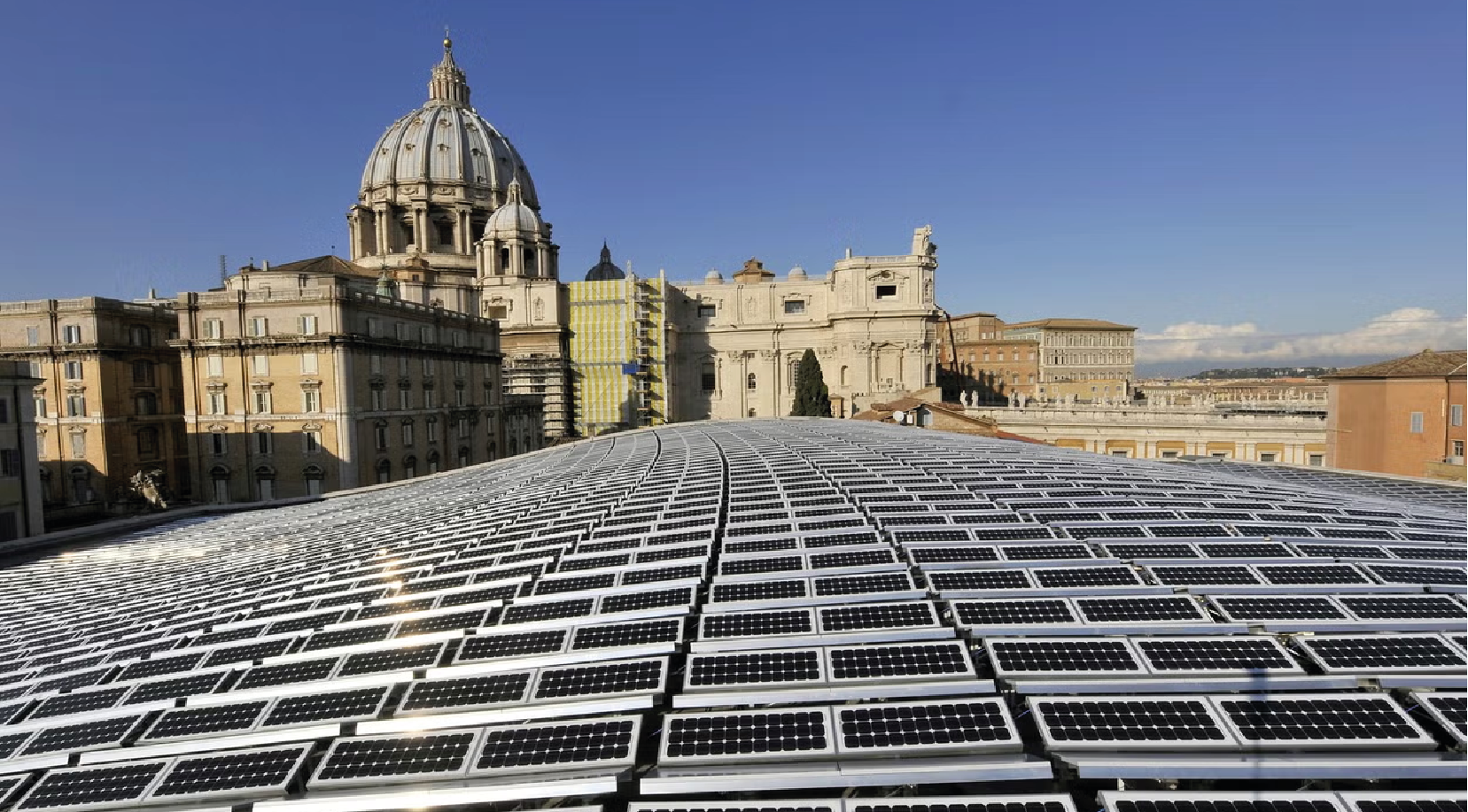(ZENIT News / Vatican City, 08.30.2024).- The Vatican, the world’s smallest state, is making significant strides toward sustainability, embodying the ecological vision laid out by Pope Francis in his encyclical Laudato si’. Under the leadership of Salvatore Farina, a former Chief of Staff of the Italian Army and current head of the Vatican’s Directorate of Infrastructure and Services, the Holy See is implementing a series of groundbreaking projects aimed at reducing its environmental footprint.
Solar Power and Electric Mobility: Leading the Charge
One of the Vatican’s most notable initiatives is the expansion of solar energy systems across key locations, including the entrance to the Vatican Museums and the Vignaccia area. These new photovoltaic installations build on the foundation laid over fifteen years ago when 2,500 solar panels were installed on the Paul VI Audience Hall, making it one of the largest solar-powered buildings in Rome.
In addition to harnessing solar power, the Vatican is also making strides in promoting electric mobility. The installation of 35 electric vehicle charging stations throughout the city-state is a clear indicator of this commitment. These stations are available not only for official Vatican vehicles but also for employees, representing a broader effort to modernize transportation and reduce the carbon footprint within the Vatican’s borders.
Digitization and Energy Efficiency: A New Era of Green Governance
The Vatican’s path to sustainability also includes a concerted push toward digitalization to cut down on paper use. By transitioning to digital document management and administrative processes, the Vatican is reducing its reliance on paper and other resources, aligning with the global trend toward more sustainable operations.
Moreover, the Vatican is updating its cooling systems by replacing outdated refrigeration units with models that use low Global Warming Potential (GWP) refrigerants. This change significantly reduces the emission of harmful pollutants, furthering the Vatican’s commitment to environmental responsibility.
In a move that combines energy efficiency with aesthetic enhancement, St. Peter’s Basilica and St. Peter’s Square have been outfitted with energy-saving LED lighting. This upgrade not only cuts down on energy consumption but also reflects the Vatican’s dedication to environmental stewardship, a core tenet of Pope Francis’s teachings.
Sustainable Resource Management and Renewable Energy: A Holistic Approach
A cornerstone of the Vatican’s sustainability strategy is the responsible management of natural resources like water and energy. This comprehensive approach includes overhauling the Vatican’s technological infrastructure to incorporate less polluting fuels and cleaner alternatives for its vehicles, leading to a significant reduction in CO2 emissions.
The Vatican’s commitment to green energy is further exemplified by its partnership with the utility company Acea, which now supplies the state with electricity exclusively from renewable sources. This shift ensures that all the energy consumed within the Vatican’s walls is entirely green, setting a powerful example for the global community.
A Vision for a Greener Future
The Vatican’s journey toward sustainability is not just a technical overhaul; it represents a profound ethical and cultural transformation. Salvatore Farina emphasizes that by integrating sustainable practices into every aspect of its operations, the Vatican is not only answering Pope Francis’s call to care for our «common home,» but is also positioning itself as a leader in the adoption of environmentally friendly technologies and policies.
With these initiatives in progress, the Vatican is steadily moving closer to its goal of becoming a global exemplar of sustainability. The message is clear: even the smallest state in the world can play a pivotal role in the fight against climate change, offering hope and inspiration for a greener, more just future for all.
Thank you for reading our content. If you would like to receive ZENIT’s daily e-mail news, you can subscribe for free through this link.



